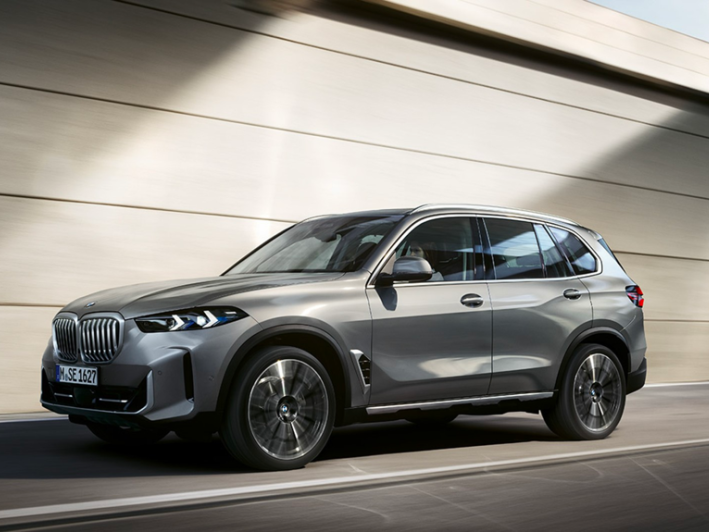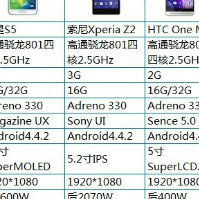Q
which is better the bmw x3 or x5
Both the BMW X3 and X5 stand as excellent examples of luxury SUVs, and the better choice boils down to your specific needs and budget. As a mid-size SUV, the X3 has a more compact footprint that makes it ideal for city driving and navigating tight roads. This translates to easier parking and zipping through Malaysia's urban landscapes, plus it comes with a relatively friendlier price tag that offers strong value—perfect if you want that premium badge without breaking the bank.
On the other hand, the X5 steps up as a full-size SUV with significantly more space, especially in the rear seats and cargo area. It’s the go-to for family trips or anyone needing extra hauling capacity. Performance and features get a boost too; you’re looking at options like air suspension and more upscale tech goodies, though that does come with a higher price tag and slightly thirstier fuel consumption.
Both models pack BMW’s cutting-edge powertrains, whether you opt for the efficient 2.0T or the punchier 3.0T engines, paired with xDrive all-wheel drive—handy for keeping things stable during Malaysia’s rainy spells. If nimble handling and everyday economy are your priorities, the X3 hits the sweet spot. But if you crave maximum space and top-tier amenities and have the budget for it, the X5 is well worth the splurge.
BMW’s after-sales network in Malaysia is solid, so both SUVs come backed by the brand’s reliable warranty and service support. My advice? Head to your local dealer for a test drive to experience them firsthand before making your call.
Special Disclaimer: This content is published by users and does not represent the views or position of PCauto.
Related Q&A
Q
What is the top speed of the 2019 BMW X5?
The top speed of the 2019 BMW X5 varies depending on the powertrain. The xDrive40i, equipped with a 3.0-liter turbocharged inline-six, is electronically limited to 250 km/h (155 mph), while the more potent M50i—with its 4.4-liter twin-turbo V8—hits the same 250 km/h cap but delivers noticeably quicker acceleration. Opting for the M Sport package’s "Driver’s Package" raises the limiter to 270 km/h (168 mph), though this requires upgraded tires and brakes to handle the extra speed.
Like most German luxury cars, the X5’s speed governor balances performance with safety while protecting the drivetrain from excessive wear. Though not as fast as BMW’s sedans, the X5 remains impressively stable at high speeds thanks to its xDrive all-wheel-drive system and adaptive suspension—making it a confident long-distance cruiser. For owners looking to exploit its performance, regular maintenance (especially brakes and tires) is key to keeping everything safe and road-ready.
Q
What is the difference between 2019 and 2020 BMW X5?
The key differences between the 2019 and 2020 BMW X5 lie in upgraded tech and features. For the 2020 model year, BMW made more equipment standard in certain markets—like the 12.3-inch digital instrument cluster and iDrive 7.0 infotainment with its more intuitive interface. Some variants also received enhanced driver assists, including improved lane-keeping and adaptive cruise control.
Visually, they’re nearly identical, though the 2020 version added optional wheel designs and paint choices. Under the hood, both years pack the same 3.0L turbocharged inline-six or 4.4L V8, but the 2020 tune prioritized slightly better fuel efficiency. BMW also retuned the suspension for sharper handling without sacrificing comfort.
For used-car shoppers, the 2020 X5’s extra kit might translate to marginally stronger resale value, though your budget and needs should dictate the choice. As a luxury midsize SUV, the X5 has always delivered driving thrills and premium comfort—both model years ace daily duties and road trips. The 2020 just edges ahead with tech perks.
Q
Is 2019 a good year for a BMW X5?
The 2019 BMW X5 is a well-rounded luxury SUV that delivers strong performance. Under the hood, its 3.0T inline-six packs plenty of punch, paired with an 8-speed automatic transmission for smooth and responsive driving dynamics. Built on the CLAR platform, it sheds weight while improving chassis rigidity—resulting in noticeably better handling and comfort.
Inside, the X5 features dual 12.3-inch digital displays (instrument cluster and infotainment) running BMW’s iDrive 7.0, giving the cabin a high-tech vibe. Fit and finish live up to the brand’s reputation for premium materials. Safety-wise, it comes standard with active braking, lane-keeping assist, and other driver aids that boost confidence behind the wheel.
For used-car shoppers, the 2019 X5 holds its value decently, but always check service records and mileage—especially for wear-prone components like the air suspension. Practicality is another strong suit, with ample space for families. If you find a well-maintained example at a fair price, this generation remains a solid pick. Just get a pre-purchase inspection to avoid surprises.
Q
How much horsepower does a 2019 BMW X5 have?
The 2019 BMW X5 offers a range of horsepower outputs across different powertrain configurations. The xDrive40i features a 3.0-liter inline-six turbocharged engine, delivering 335 horsepower and 450 Nm of torque. For those craving more performance, the xDrive50i packs a 4.4-liter V8 twin-turbocharged engine, churning out 456 horsepower and 650 Nm of torque. Opt for the plug-in hybrid xDrive45e, and you’ll get a combined output of 389 horsepower.
These powertrains ensure the X5 delivers strong performance without compromising everyday comfort. As a luxury SUV, the X5’s engineering focuses not just on power but also efficiency—thanks to technologies like TwinPower Turbo and lightweight construction, which enhance fuel economy while preserving driving dynamics.
If you’re into premium SUVs, it’s worth cross-shopping rivals in this segment. But the X5 has always stood out for its balance of power and handling, making it a solid pick for drivers who prioritize engagement behind the wheel.
Q
What generation is the 2019 BMW X5?
The 2019 BMW X5 represents the fourth generation (codenamed G05) of this iconic SUV. Built on the CLAR modular platform, the G05 delivers notable upgrades in weight reduction, tech features, and powertrain over its predecessor.
Visually, it sports larger kidney grilles and sharper body lines. Inside, you'll find a 12.3-inch digital instrument cluster and touchscreen infotainment system, debuting BMW's iDrive 7.0 with gesture control and voice assistant support.
Under the hood, the 2019 lineup offers multiple options: a 3.0T inline-six (xDrive40i), a 4.4T V8 (xDrive50i), and a plug-in hybrid variant (xDrive45e)—all paired with an 8-speed Steptronic transmission and xDrive all-wheel drive.
For the first time, BMW introduced an optional Off-Road Package featuring a rear differential lock and multiple terrain modes, boosting its rough-road capability. The G05 also marks BMW's first SUV with available laser headlights, boasting a 500-meter range. Plus, with a 30% stiffer chassis compared to the previous model, it delivers sharper handling and enhanced safety.
Q
How fast is the 2019 BMW X5?
The 2019 BMW X5 delivers impressive performance, with acceleration varying by engine choice. The range-topping X5 M50i packs a 4.4-liter V8 twin-turbocharged engine that rockets from 0-100 km/h in just 4.7 seconds, while the electronic limiter kicks in at 250 km/h. The entry-level xDrive40i, equipped with a 3.0-liter inline-six turbo, hits 100 km/h in 5.5 seconds with the same governed top speed – seriously quick for a midsize luxury SUV.
Beyond straight-line speed, the X5 features BMW's advanced xDrive all-wheel-drive system and adaptive suspension, ensuring composed handling and comfort across all road conditions. Multiple drive modes (Sport, Comfort, and Eco Pro) let you tailor the driving experience. What really stands out is the near-perfect 50:50 weight distribution – a signature BMW trait that keeps this tall SUV surprisingly agile through corners without sacrificing driving enjoyment.
Q
How much does it cost to replace the engine in a BMW X5 2019?
"The cost to replace a 2019 BMW X5 engine typically ranges between RM60,000 to RM150,000, depending on the engine type, whether you go for OEM or refurbished parts, and the labor charges at your chosen workshop. A brand-new factory engine costs more but comes with a warranty, while third-party rebuilt or used engines can save you money—just watch out for quality risks.
The X5’s B58 inline-six or N63 V8 turbocharged engines are complex beasts. When swapping them, it’s smart to also inspect the turbo system, cooling module, and related piping to avoid future headaches. If your car’s still under factory warranty, check with an authorized dealer first—you might qualify for partial or full coverage.
For high-mileage X5s with severe oil consumption or rod knock, a full engine replacement often makes more sense than a rebuild. But don’t skip the details: ensure proper ECU coding and chassis number updates, and pick a shop with BMW-specific diagnostic tools to avoid compatibility nightmares.
Pro tip? Stick to LL-04-approved oil and fix coolant leaks promptly—it’s cheaper than a new engine."
Q
Is the 2019 BMW X5 a good SUV?
The 2019 BMW X5 is a well-rounded SUV that delivers an exceptional driving experience, upscale interior, and cutting-edge tech—earning widespread praise. Under the hood, its 3.0-liter turbocharged inline-six packs plenty of punch while maintaining decent fuel efficiency, making it great for both daily commutes and road trips. Inside, you’ll find premium materials, a slick 12.3-inch infotainment screen with iDrive, and a spacious cabin (especially the rear seats and cargo area) that caters to families. Safety-wise, it comes loaded with driver-assist features like automatic emergency braking and lane-keeping assist. One heads-up, though: some owners note higher maintenance costs—a common trade-off for luxury vehicles. If your budget allows and you value brand prestige plus driving dynamics, the 2019 X5 is a solid pick. Its handling stands out in its class, perfect for drivers who crave engagement behind the wheel.
Q
What kind of engine is in the BMW X5 2019?
The 2019 BMW X5 offers a range of engine options to suit different driving preferences. The gasoline lineup includes the xDrive40i, powered by a 3.0-liter turbocharged inline-six delivering 335 hp and 450 Nm of torque. For those seeking more performance, the xDrive50i packs a 4.4-liter twin-turbo V8, churning out 456 hp and 650 Nm. There's also the plug-in hybrid xDrive45e, which combines a 3.0-liter six-cylinder engine with an electric motor for a total system output of 394 hp and an all-electric range of around 80 km.
All variants come paired with an 8-speed Steptronic automatic transmission, ensuring smooth shifts and efficient power delivery. BMW's TwinPower Turbo technology helps deliver strong low-end torque while improving fuel efficiency and throttle response.
The plug-in hybrid is a solid pick for eco-conscious buyers, blending zero-emission driving for daily commutes with the flexibility of a gas engine for longer trips. Maintenance-wise, regular checks on the turbocharging system and battery pack are recommended to keep everything running smoothly for the long haul.
Q
What type of oil does a 2019 BMW X5 use?
**BMW X5 (2019) Oil Recommendation**
For optimal performance, your BMW X5 requires a full synthetic oil that meets BMW’s **Longlife-01** or **Longlife-04** certification. The recommended viscosity is typically **5W-30** or **0W-30**, but the best choice depends on your engine type and driving conditions. In hotter climates, a **0W-40** oil may offer better high-temperature stability.
Stick to **genuine BMW oil** or trusted brands like **Shell, Mobil 1, or Castrol** that meet BMW’s specs—this ensures top-tier engine protection. Oil changes are crucial: aim for every **10,000–15,000 km (or 12 months)**, but always check your owner’s manual for exact intervals.
Full synthetic oils reduce wear, boost fuel efficiency, and extend engine life—especially important for turbocharged models. **Diesel engines** may need different oil specs, so consult your dealer or a certified mechanic to confirm the right product.
*Pro tip:* Don’t cut corners on oil quality—your X5’s engine deserves the best.
Popular Cars
Model Year
Car Compare
Car Photo
Latest Q&A
Q
Is the 1.5 L 4 cylinder?
Yes, a 1.5L engine is typically a 4-cylinder setup—the most common configuration for small to mid-sized displacements. This layout strikes a solid balance between fuel efficiency and power output, making it ideal for daily commuting and family use. Four-cylinder engines are relatively simple in design, cheaper to maintain, and benefit from proven technology that delivers smooth operation. You'll find this configuration widely used by mainstream brands like Honda, Toyota, and Mazda. While there are some 1.5L 3-cylinder options out there, the 4-cylinder remains the go-to choice, especially in models prioritizing durability and refinement. If you're shopping for a 1.5L-powered car, pay attention to specific tech features—turbocharging, direct injection, etc.—as these can significantly impact real-world driving dynamics and fuel economy.
Q
What is the displacement of a V8 engine?
The displacement of a V8 engine typically ranges from 4.0 to 6.2 liters, depending on the vehicle and its purpose. For example, high-performance sports cars often pack a 5.0-liter or larger V8, while trucks and SUVs usually stick with something between 4.3 and 5.7 liters. Known for its brute power and smooth operation, the V8 is a go-to for acceleration and towing—though its thirst for fuel is something buyers always weigh up.
These days, turbocharging has changed the game. Smaller-displacement V8s (like a twin-turbo 4.0L) can now deliver big-block performance with slightly better efficiency. And let’s not forget the sound—few things beat the roar of a tuned V8 exhaust, a big reason why enthusiasts love ‘em.
If you’re into V8s, keep an eye on local used car listings or auto shows—you’ll often spot some gems there.
Q
What is the difference between 1l and 1.2 L engine?
The key difference between 1-liter (1L) and 1.2-liter (1.2L) engines comes down to displacement—the total volume of all cylinders in an engine, measured in liters. Generally, a larger displacement means more power and torque, so a 1.2L engine will likely feel stronger during acceleration, highway driving, or when tackling hills with a load. That said, it’ll also drink a bit more fuel compared to the 1L.
The 1L, being smaller, prioritizes fuel efficiency, making it a smart pick for city commuting or everyday runs. On the flip side, the 1.2L’s extra performance often means higher manufacturing costs, which might bump up the car’s price tag. Plus, the 1L’s compact size fits better in smaller or budget-friendly models.
Your choice really hinges on driving needs: go for the 1.2L if you regularly hit the highway or want more grunt, but stick with the 1L if you’re mostly urban-bound and watching fuel bills. Oh, and don’t forget—tech like turbocharging or variable valve timing can squeeze near-equal performance from smaller engines these days, so specs alone don’t tell the full story. Always check how the engine’s tuned.
Q
What does 5.7 liter engine mean?
A 5.7-liter engine refers to a total displacement of 5.7 liters, meaning all cylinders combine for a total working volume of 5,700 cubic centimeters. Generally, a larger displacement allows the engine to take in more air and fuel, delivering stronger power and torque—making it ideal for performance-oriented vehicles or those built for heavy-duty work, like pickup trucks, full-size SUVs, or muscle cars.
In the local market, you’ll often find big-displacement engines in American-branded vehicles. These engines excel at high-speed cruising or towing heavy loads, though they do come with higher fuel consumption and increased running costs.
Thanks to advancing technology, many automakers now use turbocharging or hybrid systems to help smaller engines deliver power comparable to older, larger naturally aspirated units—like how some modern 2.0L turbocharged engines can match the performance of older V6 engines while being far more fuel-efficient.
If fuel economy is a priority, a smaller turbocharged or hybrid model might be the better choice. But if you value the smooth, raw power of a classic big-block, a 5.7-liter engine remains a timeless option.
Q
What liter engine is a V6?
The displacement of a V6 engine isn't set in stone—it typically ranges between 2.5 and 4.0 liters, depending on the vehicle's design and purpose. For example, a family sedan might pack a 2.5L or 3.0L V6, while performance cars or pickups could go for 3.5L or larger. Displacement directly impacts power output and fuel economy: bigger usually means stronger, but thirstier too.
Named for its six cylinders arranged in a V-shape, the V6 strikes a sweet spot—delivering smoother operation and better balance in a compact package compared to four-cylinder engines, while being more fuel-efficient than V8s. That's why it's a popular choice for midsize sedans and SUVs.
These days, with turbocharging becoming commonplace, smaller-displacement V6 turbos can match the punch of older, bigger engines while sipping less fuel. Choosing one? Think about your daily needs. A 2.5L works fine for city commutes, but if you're frequently hitting the highway or towing, step up to 3.0L or above.
View MoreRelated News

BMW X5 will become BMW's first model equipped with a hydrogen fuel cell, with a range of 504 kilometers
JamesSep 8, 2025

How strong is the overall strength of the BMW X5 that it even makes the wealthy give up the Benz GLE and Audi Q7?
RobertSep 25, 2024

The 2024 BMW X5 xDrive50e is priced at RM 528,100, with 0-100km/h just taking 4.8 seconds
LienJun 26, 2024

Audi RS6 sedan version may return to compete fully with the BMW M5
WilliamNov 21, 2025

Neue Klasse platform's first mass-produced vehicle, the all-new BMW iX3 makes its debut, looks just like a concept car
LienSep 8, 2025
View More


















Pros
Cons